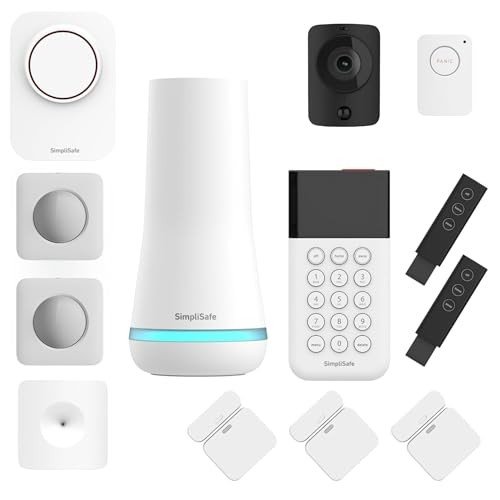
Buy Designer Lighting UK
Add a review FollowOverview
-
Sectors Power/Utility
-
Posted Jobs 0
-
Viewed 12
Company Description
The 10 Most Terrifying Things About Traditional Lighting UK
Traditional Lighting in the UK: A Comprehensive Overview
Traditional lighting holds a valued location in the homes and public areas of the United Kingdom. With its ability to evoke fond memories, appeal, and warmth, traditional lighting fixtures use not only visual appeal but also useful worth. This post digs into the various kinds of traditional lighting common in the UK, their history and advancement, popular styles, and how to include them into modern design.
A Historical Perspective on Traditional Lighting
The development of lighting in the UK Lighting Company has actually been comprehensive. From the flickering flames of candles and oil lamps to the introduction of gas and electrical lights, the journey is as interesting as it is informing.
Key Milestones in Lighting History:
- Candles (Before 1800s): The earliest form of synthetic light, utilizing tallow or beeswax.
- Oil Lamps (Late 18th Century): These ended up being popular in homes and theaters, offering brighter illumination than candle lights.
- Gas Buy Under Cabinet Lighting UK (Early 19th Century): Revolutionized public and street lighting before electrical power took precedence.
- Electric Lighting (Late 19th Century): Marked the shift to modernity, with incandescent bulbs gradually replacing older types.
Each of these advancements paved the way for traditional lighting, which still integrates ancient strategies into contemporary designs.
Types of Traditional Lighting
Traditional lighting can be classified into a number of distinctive types, each with its special qualities.
1. Chandeliers
Chandeliers are frequently the focal point of a room. They come in numerous styles, from elaborate Victorian styles to easy, rustic designs.
Popular Features:
- Crystal decorations
- Iron structure
- Numerous bulb types
2. Wall Sconces
Wall sconces offer both creative style and soft lighting. They can be used in corridors, living rooms, or bathrooms, enhancing the environment of an area.
Typical Styles:
- Candle-style sconces
- Brass or iron fixtures
- Vintage-inspired styles
3. Table Lamps
Table lamps embody the versatility of traditional lighting as they can fit into any room. Varying from easy designs to ornate pieces, they are ideal for reading nooks, side tables, or desks.
4. Floor Lamps
Similar to table lamps in style and function, floor lamps can create relaxing corners in a home. Vintage designs frequently include tripod bases or intricate patterns.
5. Lanterns
Though typically connected with outdoor settings, traditional lanterns can also be used inside for a rustic touch. They are available in numerous products including wood and metal.
Integrating Traditional Lighting into Modern Decor
In a world significantly leaning towards minimalism and modern designs, traditional lighting still holds its ground. The secret is to maintain a balance. Here are some tips for incorporating traditional lighting into a contemporary home:
1. Mix Styles
Integrate traditional lighting with modern furnishings to produce an eclectic room. For instance, a vintage chandelier can be hung above a streamlined dining table.
2. Usage Dimmer Switches
To control the ambiance, install dimmer switches that enable soft lighting, which matches both traditional and modern interiors.
3. Choose Mixed Materials
Select lighting fixtures that integrate different materials, such as a wooden lamp with a metal or glass base, to bridge the gap in between old and brand-new.
4. Highlight Architectural Features
Use traditional fixtures to highlight distinct architectural features in your house. For example, hanging a vintage lantern in a hallway with exposed brick enhances its rustic appeal.
5. Include Natural Elements
Choose designs that incorporate natural materials such as wood or wrought iron. These components tend to blend well with modern design while retaining a traditional style.
Table: Comparison of Traditional Lighting Types
| Lighting Type | Description | Common Materials | Typical Settings |
|---|---|---|---|
| Chandeliers | Decorative ceiling fixtures, often elaborate | Crystal, metal | Dining spaces, ballrooms |
| Wall Sconces | Mounted fixtures that provide ambient light | Brass, iron | Hallways, living rooms |
| Table Lamps | Portable lamps for tables and desks | Glass, ceramic | Bed rooms, offices |
| Floor Lamps | Standalone Buy Industrial Lamps UK for corner lighting | Wood, metal | Living rooms, dens |
| Lanterns | Rustic or vintage light sources | Wood, metal | Patios, gardens |
Regularly Asked Questions
1. What is traditional lighting?
Answer: Traditional lighting describes lighting fixture that embody historical or Traditional Lighting UK styles, typically characterized by the use of ornate products, complex patterns, and a warm visual.
2. How can I keep traditional lighting fixtures?
Response: Regular cleaning and periodic deep cleaning are important. For fixtures with glass or crystals, utilize a mild glass cleaner. For metal components, ensure you use suitable cleansing solutions that won’t damage the surface.
3. Are traditional lighting fixtures energy-efficient?
Response: Many traditional fixtures can accommodate modern LED bulbs, which provide much better energy performance. Constantly inspect compatibility when changing to LED choices.
4. Can I mix traditional lighting with modern style?
Answer: Yes, blending traditional lighting with modern design can produce a distinctively inviting space. Balance is important; opt for complementary designs to maintain visual consistency.
5. What is the best method to pick traditional lighting for my home?
Response: Consider your home’s total style, the function of the space, and individual taste. Take measurements to guarantee appropriate sizing and choose materials and colors that balance with existing decor.
Traditional lighting works as an enduring link to history, craftsmanship, and visual appeals, proving that classic styles have their rightful location, even in the middle of developing trends. Understanding the different types of traditional lighting and their application can help property owners create welcoming areas that reflect both sophistication and warmth, flawlessly mixing the past with the present.

